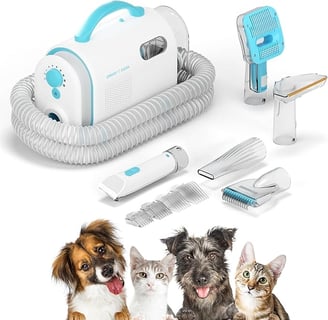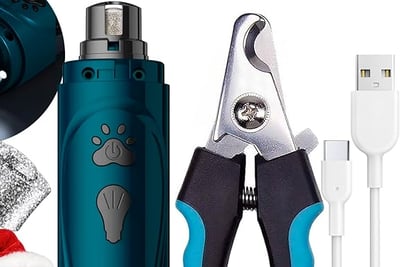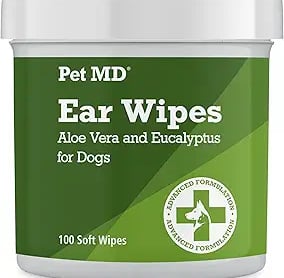Grooming for Dogs: A Comprehensive Guide
5 min read


Understanding Your Dog's Grooming Needs
Different dog breeds exhibit a variety of grooming needs based on their unique coat types, skin sensitivities, and prevalent grooming issues. It is essential to understand these factors to establish an effective grooming routine tailored to your dog's specific requirements. Dogs can be broadly categorized into three coat types: short, medium, and long. Short-haired breeds, such as Beagles and Boxers, typically require less grooming, primarily involving occasional brushing to remove loose hair. Conversely, medium and long-haired breeds, including Golden Retrievers and Shih Tzus, necessitate more frequent grooming to prevent matting and tangling.
Another crucial consideration is your dog’s age, health, and lifestyle. Puppies usually require gentle grooming as they are acclimating to handling, whereas senior dogs might have special considerations due to health issues or mobility challenges. Regular grooming contributes not only to a dog’s aesthetic appeal but also their physical well-being. For instance, brushing helps in the distribution of natural oils across the coat, leading to healthier skin and a shinier appearance.
It is also imperative to be aware of specific signs that indicate when a grooming session is pertinent. Excessive shedding, an unpleasant odor, or tangles in the coat may signal that your dog requires immediate grooming attention. Additionally, pay attention to skin irritations or abnormal growths, as these could indicate allergies or other health concerns. By understanding your dog's individual grooming needs and setting a routine based on their characteristics and lifestyle, you can significantly enhance their overall health and happiness, ensuring they remain comfortable and well-cared-for.
Essential Tools and Supplies for Home Grooming
Effective home grooming requires a variety of tools and supplies tailored to your dog's unique grooming needs. A well-equipped grooming kit not only enhances the grooming experience but also contributes to your pet’s overall health and hygiene. Herein, we categorize crucial items into brushes, clippers, nail trimmers, shampoos, and cleansers.
First, brushes come in different types suited for various coat types. For long-haired dogs, a slicker brush is essential, while short-haired breeds benefit from a bristle brush that easily removes loose fur. Additionally, deshedding tools can be invaluable for dog breeds prone to heavy shedding. It is crucial to choose brushes that are suitable for your dog’s specific fur types to avoid any discomfort during grooming sessions.
Clipper selection is another vital aspect of home grooming. Electric clippers with adjustable blades provide versatility for various coat lengths and types. It is advised to select quiet, cordless options to minimize stress for your pet. For sensitive areas, such as around the ears or paws, specialized trimmers or scissors should be in your toolkit.
Nail care is imperative for preventing painful injuries. A good quality nail trimmer or grinder ensures a clean cut, avoiding the risk of cutting too close to the quick. It is also advisable to have a styptic powder handy in case of accidental bleeding.
When it comes to bathing, choosing the right shampoos and cleansers catered to your dog’s skin type is essential. Opt for hypoallergenic and natural products to avoid irritation. Additionally, including an arnica-based spray or soothing wipes can assist in addressing any skin irritations. You can find these grooming essentials at local pet stores, online retailers, or veterinary clinics.
Lastly, proper maintenance of your grooming tools will ensure their longevity. Regular cleaning and proper storage will keep your brushes and clippers in optimum condition for regular use. With the right tools and knowledge, home grooming can be a rewarding experience for both you and your beloved pet.
Step-by-Step Home Grooming Techniques
Home grooming for dogs can be a rewarding experience for both you and your pet when approached with the right techniques. To ensure your dog feels comfortable, it is important to create a calming environment. Start by familiarizing your dog with the grooming tools. Use treats and positive reinforcement to encourage your dog to participate in the process, helping to alleviate any anxiety.
The first step in home grooming is bathing. Use a gentle dog shampoo suited to your dog's skin type. Before bathing, brush your dog to remove loose fur and prevent mats. Run lukewarm water over your dog, avoiding the eyes and ears, and apply shampoo, lathering gently. Rinse thoroughly to remove all soap residue, as this can irritate the skin. Make sure to praise your dog throughout the bathing process, making it a pleasant experience.
After bathing, the next step is brushing. Choose the appropriate brush for your dog's coat type; slicker brushes are great for long-haired breeds, while bristle brushes work well for short-haired dogs. Brush in the direction of hair growth to detangle and remove loose fur. Regular brushing not only maintains a healthy coat but also promotes bonding time between you and your dog.
Nail trimming is another critical aspect of home grooming. Use a quality nail clipper designed for dogs. Gently hold your dog's paw and trim just the tip of the nail, being cautious of the quick, which is the pink area inside the nail. If your dog is anxious, consider doing one paw at a time, providing breaks and rewards. Additionally, it may help to familiarize your dog with the sound of the clippers beforehand.
Ear cleaning is essential for preventing infections, especially in floppy-eared breeds. Use a veterinarian-approved ear cleaner and a cotton ball to wipe the outer ear gently. Avoid inserting anything into the ear canal. Finally, if your dog's fur requires trimming, use scissors or clippers specifically designed for pets. Always work in small areas and take your time.
In situations where your dog may become anxious, use calming strategies such as breaks and soothing tones to create a positive grooming experience. Addressing common challenges, like matting, involves patiently working through the tangles, using either a detangling spray or a comb designed for such issues. With consistent practice and a gentle approach, home grooming can be an enjoyable routine for you and your dog.
Maintaining a Grooming Schedule and Bonding with Your Dog
Establishing a regular grooming schedule is fundamental to maintaining your dog’s coat and skin health. A consistent routine allows you to monitor any changes in your dog’s condition, such as skin irritations or unusual shedding patterns. Typically, grooming frequency should vary based on your dog’s breed, coat type, and personal needs. For instance, long-haired breeds may require grooming several times a week, while short-haired dogs might only need monthly sessions. By determining a grooming schedule that caters to your dog’s specific requirements, you can ensure that their coat remains clean, well-maintained, and healthy.
To create a consistent grooming routine, consider incorporating grooming activities into your daily or weekly engagements. Designate a specific day and time for grooming to help establish a habitual practice, ensuring that you and your dog can both anticipate and prepare for these sessions. Over time, dogs will learn to associate grooming with positive experiences, making it easier for you to maintain their grooming schedule. Additionally, it can be beneficial to track grooming sessions, noting aspects such as brushing frequency and any products used, further enhancing your regimen.
Home grooming is not just a necessary task; it can also serve as an opportunity to strengthen the bond between you and your pet. Regular interactions during grooming sessions often foster trust and cooperation, as your dog becomes accustomed to being handled. To promote a positive atmosphere, it is essential to incorporate methods of play and relaxation during grooming. Pairing grooming activities with treats or praise can turn potentially stressful moments into enjoyable ones for your dog. Engaging with your pet throughout the grooming process encourages a sense of comfort, thereby enhancing your relationship and ensuring a trusting bond.











